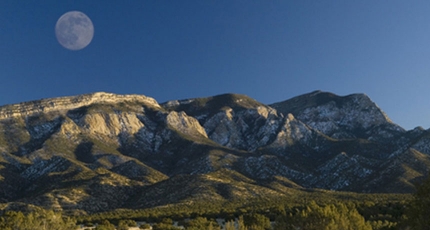Roswell born, New Mexico raised, and educated at New Mexico Military Institute, West Point, and Haverford, Peter Hurd left formal schooling to apprentice himself to N. C. Wyeth in Chadds Ford, Pennsylvania. There he married his teacher’s daughter, Henriette Wyeth. The couple set up house in New Mexico and soon moved to San Patricio in the Hondo Valley. The Hispanic life and landscape there became one of Hurd’s enduring subjects.
His Southwest work in tempera, a medium to which he turned in the thirties, is generally thought to represent the high point of his career. His portraits of ranching friends and Hispanic neighbors from that period, usually done in tempera or litho crayon, display a Depression sensibility in which poverty and dignity are not as easily separable as they seem to have become for later artists.
Peter Hurd’s later paintings became more panoramic, and often displayed an uncanny mastery of light, which manifested itself in backlit clouds and dusky rivers. This work also contains some of the most trenchant depictions of the changing face of New Mexico ranching in the fifties and sixties as its economic base moved from raising cattle to extracting oil.
Growing up on the eastern plains of New Mexico, Hurd had a personal sense of the great westward migration and an appreciation of the lonely simplicity of the life of cowboys and herders. His masterful lithograph, “The Sentinel–Santa Fe Trail,” illustrates an inherent familiarity, both as fact and myth, with the daily dangers of the wagon train. The iconic depiction of this scene differs in style from the equally fine print, “The Sheepherder’s Christmas, New Mexico,” in which the warmth of yule fellowship out in the open is contrasted with the twinkling cold of the stars. Both are depicted in raw, unsentimental terms.



